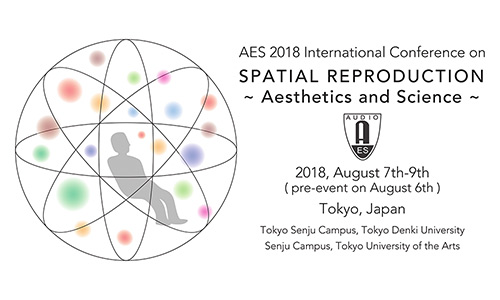
Chair: Brian Katz
Chair: Jorge Treviño
Chair: William Martens
Chair: Atsushi Marui
Chair: Akira Omoto
Chair: Joel Douek
Chair: Kenji Ozawa
Chair: Shuichi Sakamoto
Chair: Hyunkook Lee
Chair: Christoph Sladeczek
Chair: Aki Mäkivirta
Chair: Ephraim Hahn
Chair: Hiraku Okumura
